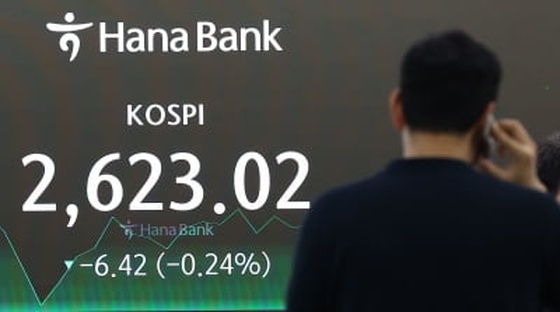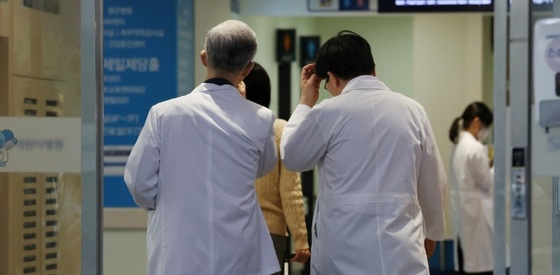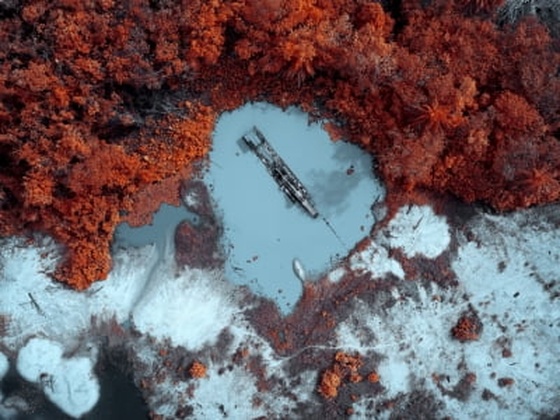[Global View] 재난 구조 자원봉사자 활용법
![[Global View] 재난 구조 자원봉사자 활용법](https://img.hankyung.com/photo/201706/AA.14145449.1.jpg)
자발적으로 달려간 자원봉사자들은 재난 상황에서 응급서비스를 제공하는 데 큰 도움을 줄 수도 있다. 반면 이들은 조직화된 자선단체에 속하지 않고 제대로 된 훈련을 받거나 필요한 전문지식을 갖추지 못했기 때문에 문제를 일으킬 소지도 있다. 후쿠시마의 많은 재난구호센터들은 숙소 제공, 조직화 등의 어려움 때문에 자원봉사자들을 제한적으로 받을 수밖에 없었다.
이 때문에 영국 맨체스터 경영대학원은 국제표준기구(ISO)와 공동으로 전 세계에 걸쳐 일어나는 재난에 대한 대응 능력을 높일 수 있는 새로운 표준(ISO 22319:2017)을 개발했다. 이 표준은 홍수나 허리케인 등 재난이 발생했을 때 기관이나 단체들이 열정적인 자원봉사자들을 효과적으로 활용할 수 있도록 가이드라인을 제공하기 위해 마련됐다.
재해는 예고 없이 발생하기 때문에 담당자들이 사태를 완전히 파악하기도 전에 사람들이 소셜미디어를 통해 자발적으로 팀을 구성해 수시간 내에 재해 현장에 도착하는 경우가 있다. 따라서 정부, 자선단체, 비정부기구(NGO)들은 봉사자들이 몰려올 것을 예상하고 대응책을 마련하는 게 중요하다. 이전에 일어난 비슷한 성격의 재난 상황에서 몇 명의 봉사자들이 왔는지 파악해 앞으로 올 사람들의 추정치를 계산하는 것이 봉사자 관리에 큰 도움이 된다.
재난 지역은 위험한 장소다. 그래서 훈련받지 않은 자원봉사자들은 오히려 상황을 더 복잡하게 만들기도 한다. 재난 현장에 도착한 자원봉사자들은 소매부터 걷어붙이지만 그들이 실제로 응급서비스 활동에 배치되려면 기관이나 NGO의 좀 더 체계적인 지원이 필요하다.
자원봉사자들이 자신이나 다른 사람들을 위험에 빠뜨리지 않고 할 수 있는 업무를 발굴하고, 이들의 일에 대해 누가 책임을 져야 할지를 명확히 할 필요가 있다. 자원봉사자들이 안전 수칙을 따르지 않으면 계속 일하는 것이 부적합하다고 간주해야 한다.
자원봉사자들을 신중하게 선정하는 것도 중요하다. 지원자들을 평가하고 인터뷰함으로써 구호 현장에서 활용 가능한 최고의 자원을 확보할 수 있다. 자원봉사자 등록 절차가 필요하다는 의미다. 자원봉사자의 현지 지식, 신체 능력 등을 고려해야 한다. 최근 크고 작은 여러 홍수를 겪은 영국 서머셋주(州) 정부는 ‘영국 공무원 자원봉사자의 날’에 공무원을 대상으로 자원봉사자 선정 방법을 훈련했다.
자원봉사자를 조직화하기 위해선 명확한 의사소통 라인을 구축하는 것이 중요하다. ‘얼마나 자주, 어떻게 의사소통을 할 것인가. 소셜미디어 이메일 웹사이트 등 어떤 채널을 통해서 정보를 전달할 것인가’ 등에 대한 기본 원칙을 정해야 한다.
사람들은 도움이 필요할 때 서로 돕기를 원한다. 자원봉사자들은 세계 곳곳에서 실제적으로 진심을 다해 도움을 주고 있다. NGO, 자선단체, 정부엔 이런 선의를 구호 활동의 강력한 도구로 활용할 수 있는 엄청난 기회가 있는 것이다.
던컨 쇼 < 영국 맨체스터 경영대학원 교수 >
Organising disaster relief volunteers: how to be prepared
After the Fukushima nuclear disaster in 2011, as many as 390,000 Japanese volunteers flocked to help in the worst hit regions. It’s a staggering number, which doesn’t even take into account the many thousands more who came from across the world.
Spontaneous volunteers – those who don’t belong to an organised charity and who come with minimal training or expertise – can be a massive help to emergency services in these situations, but they can also pose problems. In Fukushima, many disaster relief centres had to start limiting their intake of volunteers, because of the difficulties in accommodating and organising them.
This was one of the reasons that a team of academics at Alliance Manchester Business School worked with the International Standards Organization to develop ISO 22319: 2017 – a new standard that has the potential to enhance disaster response across the world. The standard provides guidelines on how organisations can best make use of enthusiastic spontaneous volunteers in the event of disasters such as flooding, hurricanes or man-made catastrophes.
Expect the unexpected
Disasters can happen at very short notice, but spontaneous volunteers can arrive just as quickly – some even before the emergency services. People can self-organise on social media and arrive at a scene within hours, when responders are still trying to assess what has happened.
Expecting spontaneous volunteers and being prepared with a scalable response is vital for governments, charities and NGOs. Understanding the numbers that could be coming, by looking at previous disasters of a similar nature and making informed estimates, will go a long way to ensuring agencies can manage the volunteers.
‘Being prepared’ means having plans in place
Disaster areas are dangerous places and untrained volunteers add to their complexity. Those who are first on the scene will often just roll up their sleeves, but it then falls to the emergency services to steer them towards more structured involvement through agencies and NGOs. In Fukushima, for example, the Skilled Veterans Corps nominated themselves to deal with the radiation risks, but there were procedures in place to manage the risk involved.
There are a number of steps that can be taken, starting with assigning responsibility to one agency to lead and coordinate spontaneous volunteers. Identify tasks that those volunteers can do without putting themselves, or others, at risk. Then it is necessary to have clarity on who has responsibility for the work of the volunteers.
Spontaneous volunteers need inductions to receive hazard awareness information that will ensure they can spot and reduce risks. They can then be steered towards a particular role, carried out under the supervision of experienced, paid officials or skilled regular volunteers from other charities. Volunteers who do not adhere to safe practices laid out before they start must be deemed unsuitable to continue.
Recruit volunteers carefully
It’s vital for organisations to carefully select spontaneous volunteers. By assessing and interviewing potential candidates, they can make sure they have the best resources at their disposal for the response and recovery effort. This means having a process to deal with registration as volunteers arrive.
The selection should be based on factors such as local knowledge, physical capability and their ability to follow directives from the official agencies involved in a relief effort.
Somerset county council, which recently dealt with floods of varying severity, made use of the volunteering days of UK civil service staff to train them to coordinate the selection process.
Similarly, Lincolnshire county council has responded to recent floods by training local communities, such as the Anderby volunteer emergency response team, to help in the event of coastal flooding.
Manage your volunteers
Developing clear lines of communication is vital to organise spontaneous volunteers. Agencies must identify some basic principles of communication – how will it happen? How often? Through which channels – word of mouth, social media, email, website or another? More sophisticated plans could even support spontaneous volunteers as they share their experiences with each other and the wider world while the spotlight is on the disaster area, perhaps through interactive social platforms.
People want to help each other in times of need; volunteers offer real, heartfelt support across the world. There’s an incredible opportunity for NGOs, charities and governments to take that goodwill and turn it into a powerful tool in any relief effort.
Duncan Shaw is professor of operations and critical systems at Alliance Manchester Business School and the Humanitarian & Conflict Research Institute.This article was written before the recent Manchester Arena and London attacks.
This article was originally published at theguardian.com https://www.theguardian.com/voluntary-sector-network/2017/may/30/organising-disaster-relief-volunteers-how-to-be-prepared
-
기사 스크랩
-
공유
-
프린트
![[한경에세이] 청소년 정책이라는 씨앗에 투자해야](https://img.hankyung.com/photo/202404/07.36439047.3.jpg)
![[조일훈 칼럼] 늙어가는 국가, 오늘만 살겠다는 사람들](https://img.hankyung.com/photo/202404/07.35383340.3.jpg)
![[데스크 칼럼] 여야 '부동산 협치' 시급하다](https://img.hankyung.com/photo/202404/07.18256415.3.jpg)


![기업실적 호조에 일제히 상승…테슬라는 최대폭 매출 감소[뉴욕증시 브리핑]](https://timg.hankyung.com/t/560x0/photo/202404/ZA.36457219.1.jpg)







